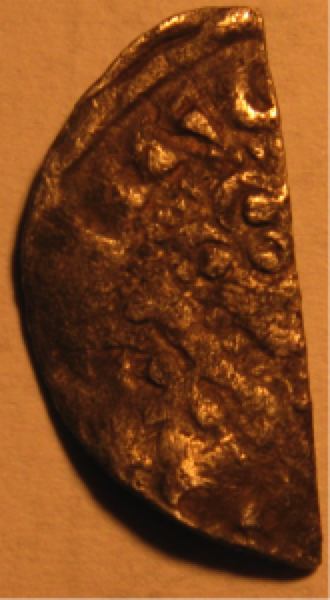Archaelogical Finds - Henry III coin
Find of the month November 2015 – By David Allsop
Silver hammered coinage is a joy to find when metal detecting. Being silver it has generally not corroded a great deal and so can be easier to identify. However, if it has been in circulation a long time before it was lost then it can be very worn, almost to the point of being smooth.
Hammered coinage starts to appear in the early Anglo-Saxon period around 600AD and is still going right up to the English Civil war.
This month’s object is a half-penny of Henry III (1216-1272). Around 1247, about half way through Henry III reign, the coinage of England had got into a poor state. Prior to 1247, silver pennies had a short cross on one side. The illegal practice of ‘clipping’ coins to take silver off the edges was widespread. So in 1247, Edward introduced the ‘long cross’ penny with a cross going to the very edge of the coin with a slightly splayed section at the end. This prevented clipping to some extent although it still went on. Once his son, Edward I, came to the throne the long cross is a single line rather than the double line seen on this coin.
This coin is a ‘half-penny’; quite literally a penny cut in half. This was normally carried out at the mint which is why it is so accurately done on this coin. And the cross provided the guide lines to cut along.
Sometimes a farthing or quarter-penny can be found but as can be imagined, these are very small and tricky to detect. It is quite worn so was probably lost a few years after it was minted. Unfortunately, the wear and the place where the cut was made means that I can’t identify the mint where this was struck.
The coin this week was found in Minting (Week 3 Nov 2015).
By David Allsop

